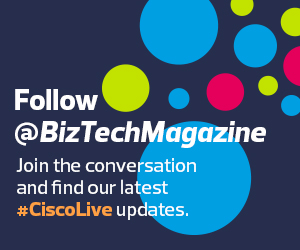1. Cisco Wants to Be at the Center of the Hybrid Work Revolution
Cisco is convinced a long-term, fundamental shift in the way people work is underway and irreversible, and it believes it is uniquely positioned to help businesses adapt.
Jeetu Patel, Cisco's executive vice president and general manager of security and collaboration, declared that “hybrid work doesn’t work yet,” because too many employees are stuck with uncomfortable working conditions and balky connections that harm their productivity and drain their mental energy.
Cisco, however, has a portfolio of collaboration hardware and software that’s both comprehensive and growing, including home office routers, cameras and desktop hubs for videoconferences to its popular Webex collaboration platform. Cisco is adding a number of artificial intelligence-driven upgrades to Webex, including several designed to improve the experience for remote attendees of hybrid meetings: making them look and feel (to the remote attendees) like everyone’s remote, for example, and adding a virtual whiteboard that everyone can use.
“Just like the Kindle is a purpose-built device for reading a book, we’ve built purpose-built devices for making sure you can engage with your work experience from home,” Patel said.
READ MORE: Find out why digital transformation must accelerate to meet customer expectations.
2. Cisco Will Focus on Organizations’ End Users
Cisco made clear that it will amplify its focus on optimizing end-user experiences, including both customer and employee experiences.
In addition to its hybrid work solutions, it introduced new applications that business can use to manage and secure their own apps. The offerings reflect Cisco’s acknowledgement that the world has entered the “application economy,” said Liz Centoni, Cisco’s chief strategy officer and general manager of applications.
“We care more about application program interfaces today because they give us the ability to leverage services from anywhere and everywhere,” Centoni said. “You can add new services or drop services without taking your application down. It’s a beautiful new world.”
To help IT leaders operate in this new world, Cisco is offering two new applications: Calisti and Panoptica.
Calisti is described as a “service mesh manager,” allowing businesses to see the health and performance of their entire application environment at a glance, then dig deeper to test how an app will likely perform under additional stressors, such as a traffic influx.
Panoptica is an application security tool that shows the vulnerabilities of all applications, based on the well-known Mitre Attack Framework, and makes it easy to take actions to remediate vulnerabilities.
Stay updated on the latest updates and insights from BizTech.













